 |
 |
 |
| |
Perinatally Infected Hispanics Have Higher Resistance Rates Than Blacks in Houston
|
| |
| |
IDSA/IDWeek 2015, October 7-11, San Diego
Mark Mascolini
Perinatally infected Hispanic children acquired major resistance-associated mutations (RAMs) at a higher rate than blacks in a 10-year 66-child study in Houston [1]. Triple-class resistance arose at almost a twice higher rate in Hispanic children than in blacks.
Research has explored the impact of ethnicity on acquisition of RAMs in adults, observed a team at the University of Texas in Houston. They designed this retrospective study to assess the impact of ethnicity on RAM acquisition in perinatally infected children. The study involved 66 children on combination antiretroviral therapy who had more than one genotypic resistance test from 1998 through 2009. The researchers defined RAM incidence as absence of a class-specific RAM on the first genotype and its presence on a later test.
Forty-nine children (74%) were black, 14 (21%) Hispanic, and 3 (5%) white. Thirty-eight of the 66 children (58%) were girls and median observation time measured 10.1 years. Eight children were born in 1980-1990, 29 in 1991-1995, 15 in 1996-1999, and 14 in 2000-2007. Four children began treatment with a single antiretroviral, 10 began with two antiretrovirals, 25 took both single- and double-antiretroviral regimens, and 54 took triple therapy.
Median age at first genotype was 6.4 years (interquartile range 3.0 to 10.0). During a median 3.1 years of viral load observation, 60 children had virologic failure, defined as a viral load above 400 copies. Overall, 51 children (77%) had a detectable nucleoside (NRTI) mutation, 27 (41%) had a nonnucleoside (NNRTI) mutation, 34 (52%) had a protease inhibitor (PI) mutation, 56 (85%) had a mutation conferring resistance to any of those classes, and 16 (24%) had triple-class resistance.
On the first resistance test, more than 75% of Hispanic children had NRTI resistance, about 25% had NNRTI resistance, more than 50% had PI resistance, and about 25% had triple-class resistance. On the first resistance genotype among black children, about 50% had NRTI resistance, fewer than 25% had NNRTI resistance, about 25% had PI resistance, and almost none had triple-class resistance.
Subsequent resistance testing showed higher acquisition of additional resistance mutations among Hispanics than blacks in all categories except PI RAMS:
NRTI mutation incidence per 100 person-years:
Hispanics 37.84 (95% confidence interval [CI] 5.33 to 268.70)
Blacks 22.27 (95% CI 11.60 to 42.81)
1.70 times higher in Hispanics
NNRTI mutation incidence per 100 person-years:
Hispanics 16 (95% CI 6.00 to 42.60)
Blacks 11.03 (95% CI 6.53 to 18.64)
1.45 times higher in Hispanics
PI mutation incidence per 100 person-years:
Hispanics 7.53 (95% CI 1.07 to 53.71)
Blacks 13.14 (95% CI 7.92 to 21.80)
1.75 times higher in blacks
Triple-class mutation incidence per 100 person-years:
Hispanics 10.50 (95% CI 3.38 to 32.56)
Blacks 5.62 (95% CI 2.92 to 10.81)
1.87 times higher in Hispanics
Probably because of the small number of study participants, none of these differences are statistically significant. But, except for PIs, incidence is higher in Hispanic children than blacks, and Hispanics started with about a twice higher PI RAM prevalence than blacks. In fact, RAM prevalence on the first resistance test was consistently higher in Hispanics.
The researchers stressed the need for further work "to understand the interplay of ethnicity, social factors, linkage and retention in medical care with the emergence of antiretroviral resistance in pediatric infected populations."
Reference
1. Contreras G, Bell C, Delbianco G, et al. Ethnicity associated disparities in antiretroviral resistance among perinatally HIV infected children and adolescents. IDWeek 2015, October 7-11, San Diego. Abstract 467. https://idsa.confex.com/idsa/2015/webprogram/Paper53581.html
------------------
Reported by Jules Levin
Our data provide evidence of differences of mRAM IRs between ethnicities where Hispanics had high rates of mRAM to NRTI, NNRTI and triple class resistance. Further studies are necessary to understand the interplay of ethnicity, social factors, linkage and retention in medical care with the emergence of antiretroviral resistance in pediatric infected populations.


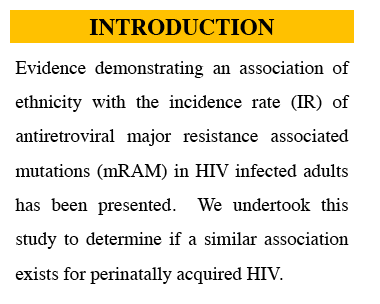
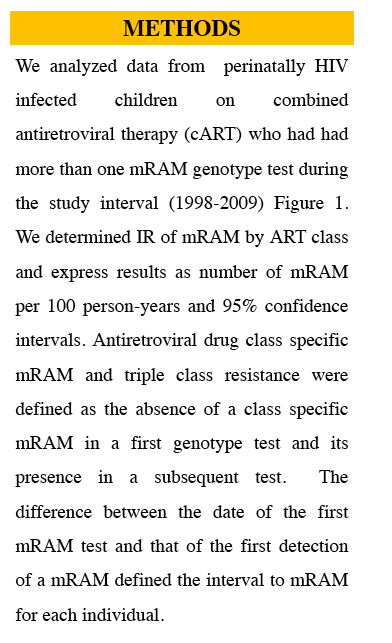
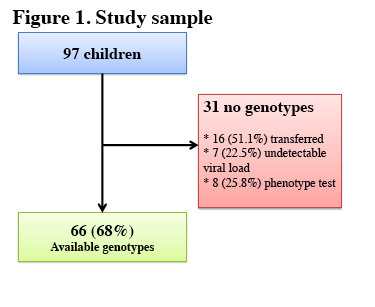

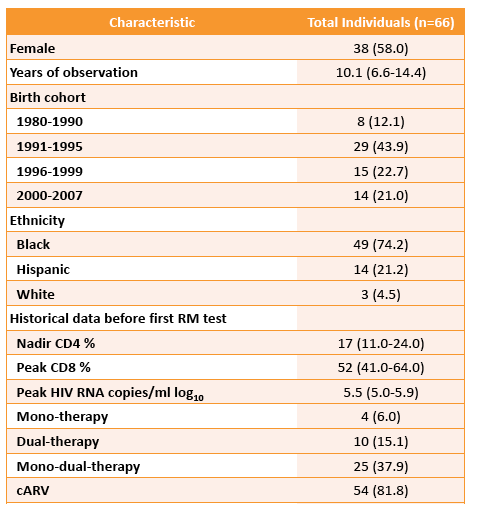
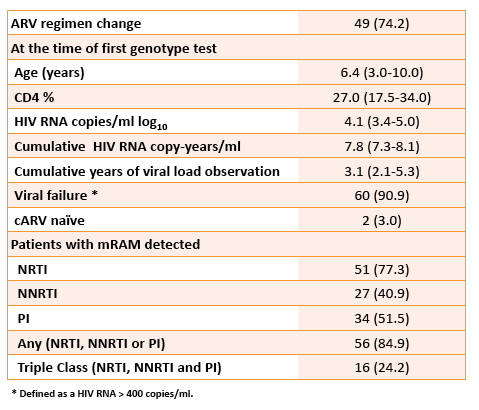
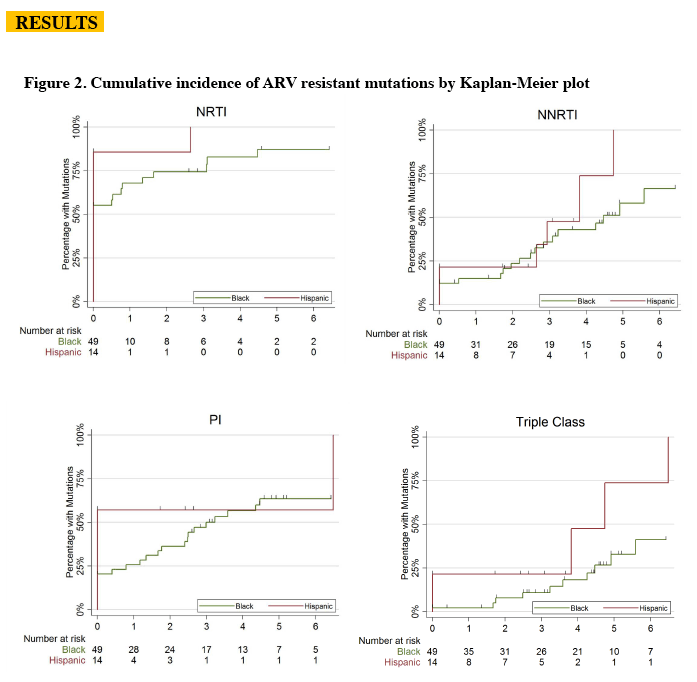
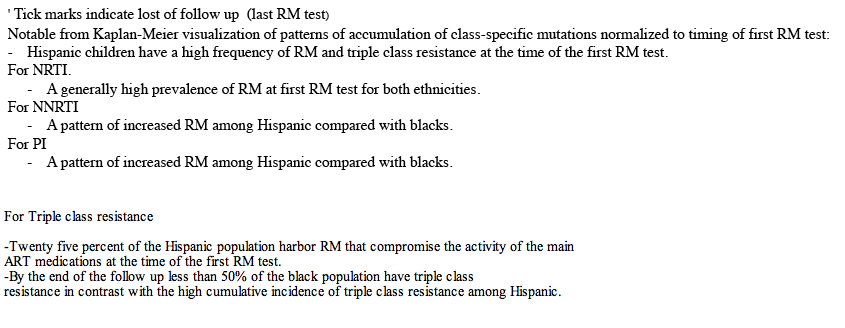
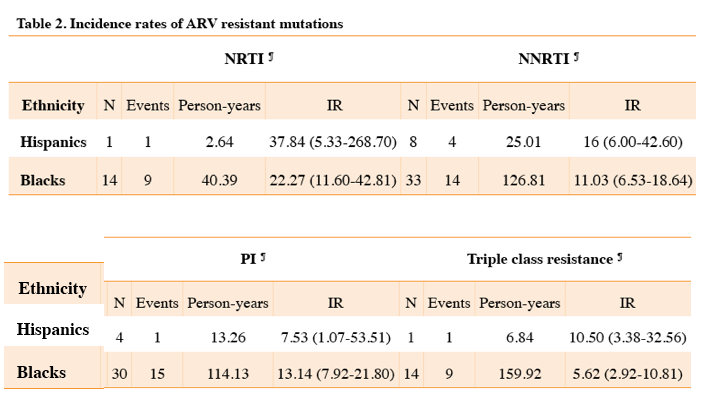
|
| |
|
 |
 |
|
|